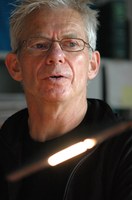 Professor Kalle Moene leads a centre at the University of Oslo which will study the phenomenon. He believes the threat to the Nordic Welfare Model comes not so much from the forces of globalisation, but rather from domestic pressures.
Professor Kalle Moene leads a centre at the University of Oslo which will study the phenomenon. He believes the threat to the Nordic Welfare Model comes not so much from the forces of globalisation, but rather from domestic pressures.
“Our challenge is to explain why a system viewed by many economists as a blue print for a macroeconomic catastrophe is working so well. We will compare facts with theory. If the two don’t add up, maybe it’s time we changed the theory”, he says.
Last year, his ESOP centre was designated Norwegian Centre of Excellence for the coming five years. If this is extended with another five-year period, the budget will total100 million Norwegian crowns (12 million Euro), making this one of the largest social science research projects ever in Norway.
The acronym ESOP stands for Equality, Social Organisation and Performance. Kalle Moene points out that the centre will not study the Nordic countries in isolation. They will be compared with many other countries, and the centre is keen to look at development issues.
One of the main questions is whether citizens of the five Nordic countries have a stronger social commitment to equality than people in other counties.
Psychological experiments
The results of the research will be published and continually updated online, at www.esop.uio.no. One of the first projects, run jointly with the Norwegian School of Economics and Business Administration in Bergen (NHH), was a study involving 400 people from Norway, Germany, Tanzania and Uganda. It explored ways of “equally” distributing compensation for a job done.
“All the participants first had to perform a task for us. In this case it was typing extracts from a book by Charles Darwin onto a PC. After the work was done the participants were awarded money according to performance. Then they were coupled randomly to other participants, maybe from a different country, and the two were asked to suggest how the pay should be distributed and which criteria would give a fair compensation.
“We haven’t done all the calculations yet, so I don’t want to reveal the results, but Germany stands out as less egalitarian in this case, while Norway is closer to Tanzania and Uganda”, says Professor Moene.
Compared to earlier research there will be no revolutionary new methods.
“We will work as traditional economists, but we may apply more institutional and psychology-based research as well. We will emphasise how political institutions and instruments can compliment each other. The policies reinforce each other.
Small wage differences give a high political acceptance for a generous welfare state, which again leads to small wage differences”, he says.
“What separates the Nordic region most from the rest of the world is perhaps the co-ordination of wage negotiations we have, where unions and employers’ associations play an important role, as well as local bargaining.”
Complex system
He conjures up an image of a complicated set of knobs which have to be tweaked in a certain order to achieve the best result.
“Technically one could decide to introduce such a policy through parliamentary elections, but it doesn’t work like that in a political-economic system”, he says.
“The complexity and the interactions between the systems can be part of the reason why few other countries have adapted the welfare model, even if the interest in the model is very high – mainly from Southern Africa and Latina America.”
The ESOP centre’s aim is not only to look at the positive sides of the Nordic Model, says Kalle Moene.
“There are also things that don’t work so well. The integration of immigrants into the labour market is one problem.”
Will the Nordic model survive globalisation?
“Many people exaggerate the external threats and think they will affect the system more than internal problems. Many also think that the Nordic countries would be better off without such tough outside competition.
But the opposite is true. These countries have done so well in the face of globalisation, because they’ve been so open and exposed to trade competition.
“The threats from within are much larger. What will the educational revolution do to wage equality? Does the system become socially unstable when a majority gets a higher education? Those are questions we need to look into.”
Kalle Moene and his team at ESOP are not the only ones trying to pinpoint exactly what makes the model work. At two Nordic Centres of Excellence (NCoE) co-financed by NordForsk and several Nordic national science funding bodies, an attempt is made to increase the quality and heighten the international visibility of the welfare state research.
Professor Pauli Kettunen at the University of Helsinki is heading a research programme on how values and traditions affects the formal and the informal rules and norms in the Nordic welfare states.
Bjørn Hvinden, Head of Research at NOVA (Norwegian Institute for Research on Welfare and Aging) will lead a programme where many of the questions are relevant to the labour market, such as the challenge migration poses for redistributive welfare states. Other questions which will be addressed include whether people are becoming more or less socially excluded and what is being done to activate unemployed people. All in all, Kettunen’s and Hvinden’s research teams will receive almost 10 million Euro in support between 2007 and 2012.




